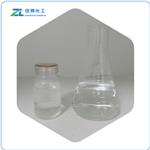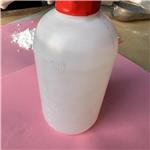Description
Nonyl acetate has a floral, fruity (mushroom-gardenia) odor and a corresponding flavor on dilution. It has a bitter taste when concentrated. It is prepared by direct esterification of n-nonyl alcohol with acetic acid.
Chemical Properties
Colorless liquid; strong pungent odor.
Soluble in
four volumes of 70% alcohol, flash p 155F (68.3C),
several isomers exist. Combustible.
Chemical Properties
Nonyl acetate has a floral, fruity (mushroom–gardenia) odor and a corresponding flavor on dilution. It has a bitter taste
when concentrated.
Occurrence
Reported found in apple, citrus peel oils and juices, grapes, melon, Gruyere cheese, milk, beer and pepino fruit
(Solanum muricatum).
Uses
Nonyl acetate finds some use in flavor compositions for imitation Apricot, Peach, Lemon
and other Citrus types, fruit complexes, etc.
Its sweet-fruity taste is accompanied by a
"peel"-like freshness, and the material is
quite powerful. Concentrations vary from 1 to
3 ppm in the finished product.
Preparation
By direct esterification of n-nonyl alcohol with acetic acid.
Definition
ChEBI: The acetate ester of nonan-1-ol.
Aroma threshold values
Detection: 57 to 600 ppb; aroma characteristics at 1.0%: waxy citrus, earthy mushroom, creamy milk,
estry with ripe apple pulp notes.
Taste threshold values
Taste characteristics at 5 ppm: waxy, stale milk, earthy mushroom, slightly metallic with cheesy nuances.
General Description
Colorless liquid with a pungent odor of mushrooms. Less dense than water and insoluble in water. Hence floats on water.
Air & Water Reactions
Insoluble in water.
Reactivity Profile
NONYL ACETATE is an ester. Esters react with acids to liberate heat along with alcohols and acids. Strong oxidizing acids may cause a vigorous reaction that is sufficiently exothermic to ignite the reaction products. Heat is also generated by the interaction of esters with caustic solutions. Flammable hydrogen is generated by mixing esters with alkali metals and hydrides. Special Hazards of Combustion Products: Irritating vapors and toxic gases, such as carbon dioxide and carbon monoxide, may be formed when involved in fire [USCG, 1999].
Fire Hazard
Special Hazards of Combustion Products: Irritating vapors and toxic gases, such as carbon dioxide and carbon monoxide, may be formed when involved in fire.
Safety Profile
Combustible liquid.
When heated to decomposition it emits
acrid smoke and irritating fumes.




